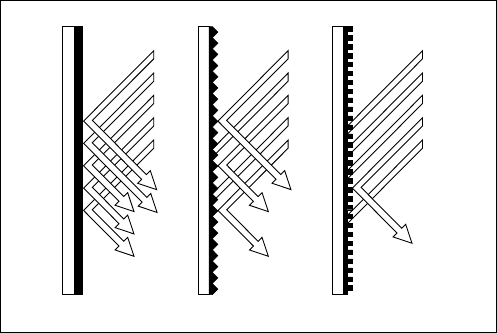
28
29
INFRA-RED TECHNOLOGY The SZI 1029 is a high power infra-red radiator. In a cordless infra-red
sound transmission system it transforms the electrical signal delivered
by an infra-red modulator or by an audio source into invisible infra-red
light and radiates this IR light into a room. In contrast to radio
transmission infra-red transmission is limited to the room, thus other
systems can be operated in neighbouring rooms without interference.
Ǡ The high-power radiator SZI 1029 is switched on by the IR carrier
signal that is produced by the modulator. Commercially available
50 Ω coaxial cables with BNC connectors are used for feeding
sig nals from the modulator to the SZI 1029 radiator.
The infra-red radiator diodes in the high power radiator respond to the
received signals and radiate modulated infra-red light. Depending on
the model the radiator delivers a radiating power of 5 or 10 W
(see
AVAILABLE MODELS).
WIDEBAND Infra-red wideband transmission systems are chiefly used for transmitting
audio signals in hi-fi quality.
The two available wideband channels (2.3 MHz and 2.8 MHz) are
internationally standardized and are either used for two mono channels
or for stereo transmission.
NARROW-BAND Infra-red narrow-band transmission systems allow the transmission of
up to 32 mono channels with a slightly reduced audio frequency response.
They are ideal for multi-channel interpretation systems and multilingual
information systems.
AREAS OF APPLICATION
Ǡ Conference and simultaneous interpretation systems
Ǡ High quality cordless sound transmission in recording studios
or for hi-fi systems
IMPACT OF CURTAINS,
• Dark and heavy materials, curtains, carpets, panellings, and wall
CARPETS, AND PAINTS coverings tend to absorb the light, a good reception can only be
achieved in direct line of sight of the infra-red radiator.
• Roughcast and strongly structured wallpapers (such as woodchip,
embossed or fabric papers) reflect the light unevenly but allow a
more uniform propagation of the infra-red signal.
• Smooth and bright walls, smooth tiled floors and windows are
highly reflective and are thus favourable for the propagation of in
fra-red light.
• Different wall paints may reflect infra-red light differently although
they have the same colour. This is due to the type and thecomposit-
ion of the paint pigmentation.
The power which is necessary to irradiate a room varies accordingly.
IR-Licht
Reflexion
IR-Licht
Reflexion
IR-Licht
Reflexion
IR light IR light
IR light
Reflection Reflection Reflection
PROPAGATION OF The propagation of the infra-red signal radiated by the SZI 1029 can be
INFRA-RED LIGHt compared to the propagation of normal daylight or artifical (lamp) light.
Thus it is subject to similar conditions when it falls onto different
materials:


















